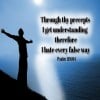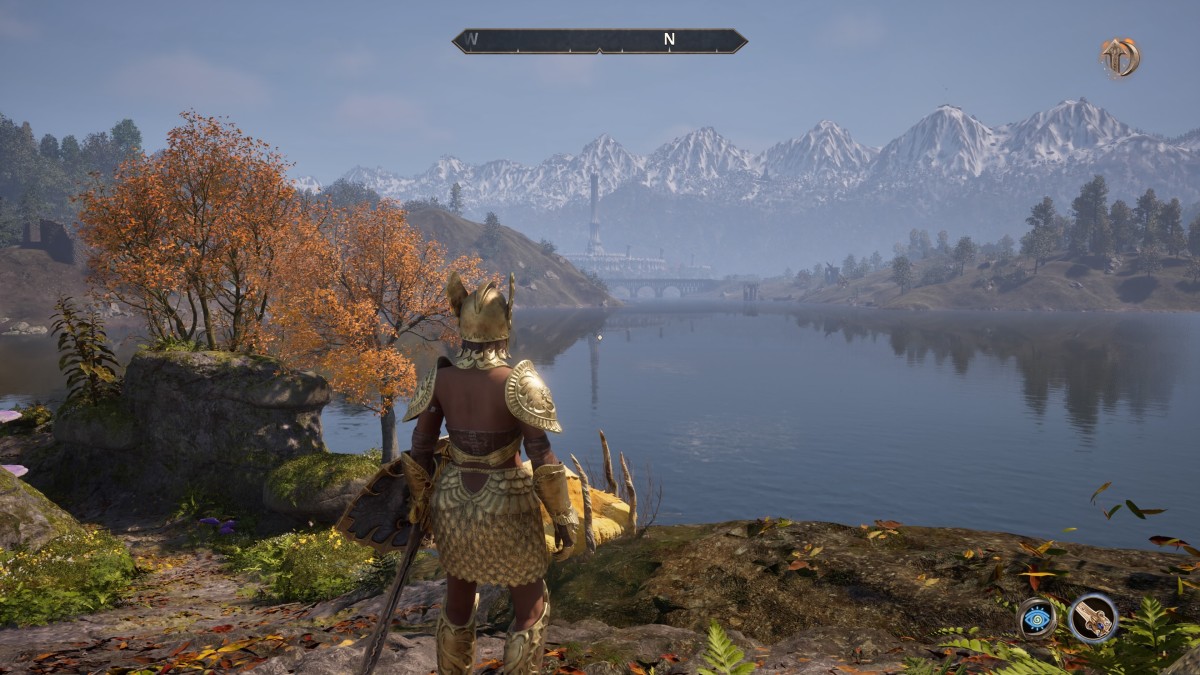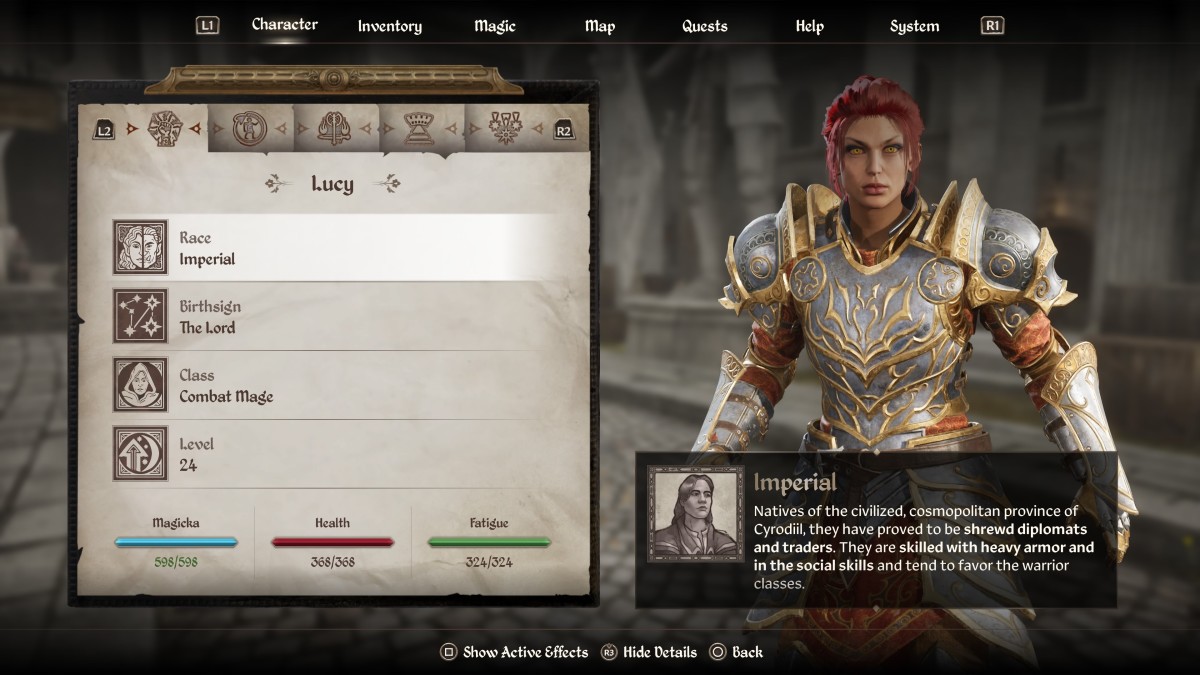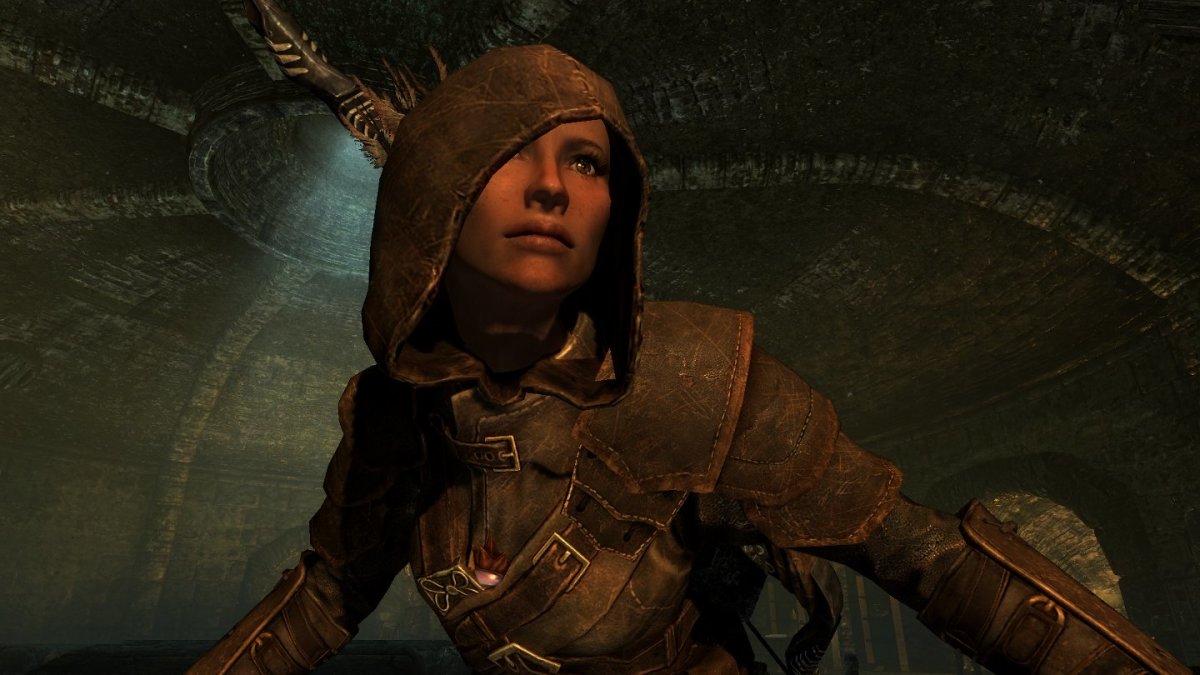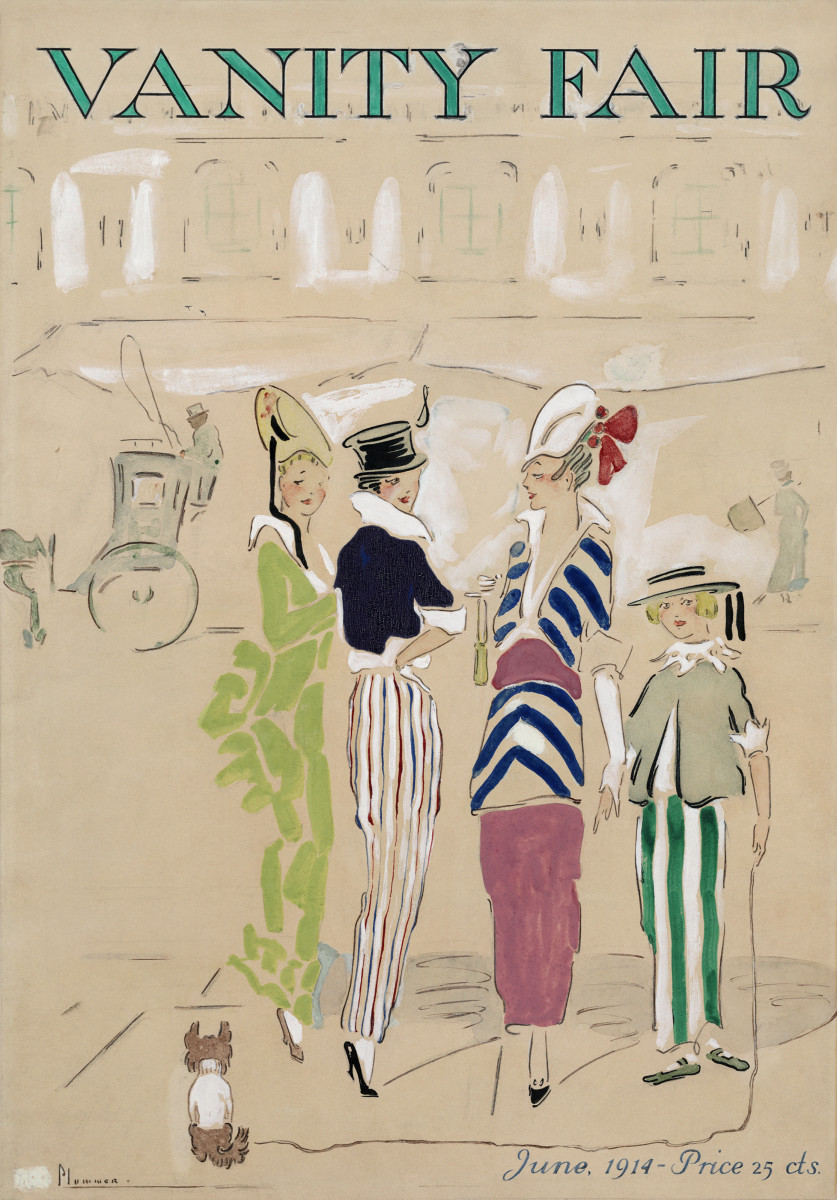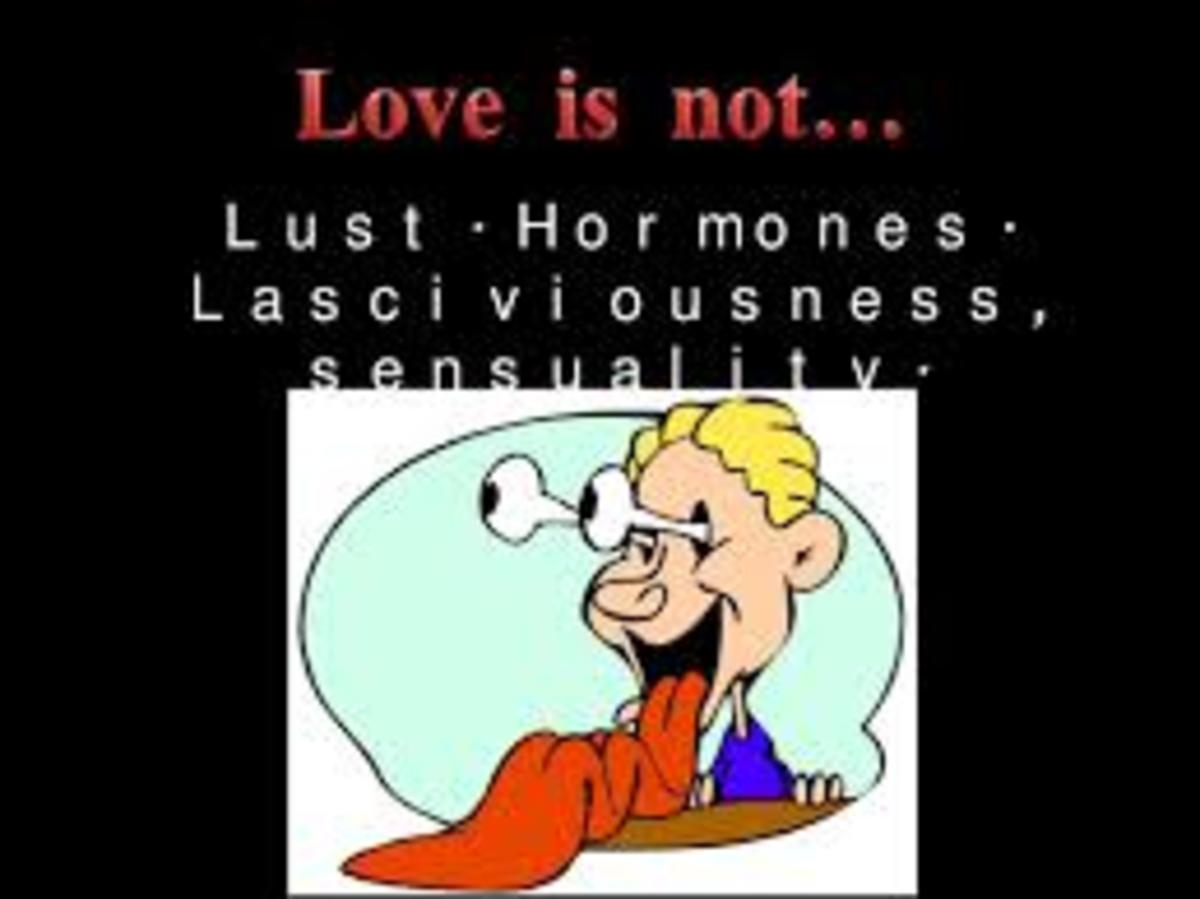The Elder Scrolls Exposed
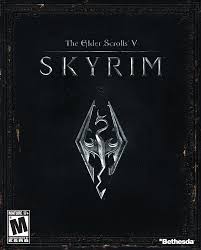
Disclaimer:
The images used are, unless otherwise stated, pictures made from the games Oblivion, Skyrim, and TES Online, which are owned by Bethesda Softworks. I do not make any claim on these images. And although I talk about this games use of Freemason/Illuminati symbols, I am not affirming the many conspiracy theories that are associated with them. I am simply showing the source of these symbols.
Welcome. Today we will be talking about The Elder Scrolls, a video game I used to play a long time ago. But after coming into the truth I realized that this game is only leading me astray and I want to list the reasons why.
- The Game Sends Bad Messages
- The Companions
- The College of Winterhold
- The Thieves Guild
- The Dark Brotherhood
- Volkihar
- Symbolism
- Aedric/Non Daedric beings
- Daedra
- The Dragonborn False Messiah
- The Ten Commands
- Conclusion
The Elder Scrolls is a series of action role-playing open world fantasy video games primarily developed by Bethesda. The series is known for its elaborate and richly detailed open worlds and its focus on free-form gameplay. Which basically means that it allows you to do whatever you want and be whoever you want. Three of its biggest games are Morrowind, Oblivion (Oblivion is also the name of the collection of realms belonging to the evil gods in the game), and Skyrim, all of them winning and selling more than 40 million copies worldwide, and their recent game The Elder Scrolls Online, while having mixed reviews, is still flourishing as of today with their new downloadable content being released.
Before I was saved I played these games for about five years, I have only played Oblivion and Skyrim, but I have done my research into the lore of the series and the games as a whole to better my report. So let's dive right into it. The main focus of this is going to be Oblivion and Skyrim as these are the ones I am most familiar with, but I will be using sources from the other games and using imagery from them as well.
- The Game Sends Bad Messages
- The Companions
- The College of Winterhold
- The Dawnguard
- The Thieves Guild
- The Dark Brotherhood
The Games Send Bad Messages
As I said before, the game is known for its free-form gameplay, allowing you to play however you like. You don't even have to play the main quest, just go do whatever you desire. You can be an assassin, a wizard, a mercenary, a thief, or even your own combination. One of the fun parts about it was that it gave everything up to the imagination when it came to creating your character.
But one of the things I hate about the games is that while I do respect the idea of playing whatever you want to be, it has lost its sense of right or wrong. Committing evil deeds don't actually give you a consequence. Okay, something like public murder or stealing does result in being arrested and only having the option to go pay your bounty, go to jail, or flee from the scene and be a wanted fugitive. But when it comes to the bigger grand scale of things the game series does not give us any real consequence for our actions.
For example, the factions in the game. Not only can you be whatever you want in the game, but you can also join one or more groups with no consequence even if they would otherwise oppose each other. Three of them can be considered good, while the other ones are evil. All of these groups offer the same rewards when finished: leadership of the group (except for the Dawnguard), master training in skills related to the group, friends to help you on your journeys, and a home in their headquarters. But here is the list of groups you can join with the inclusion of downloadable content:
The Companions
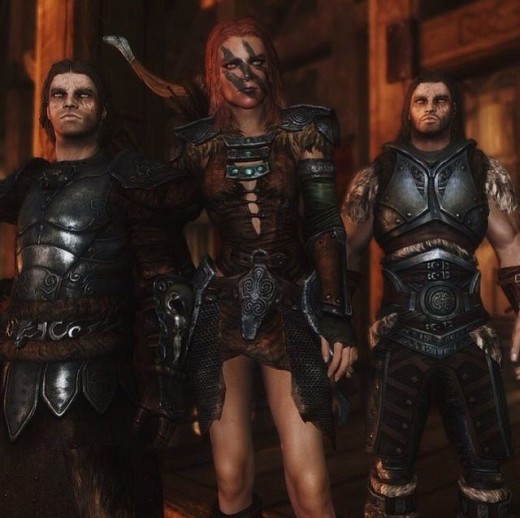
The Companions are a group of mercenaries who take jobs from around Skyrim. These include some pretty heroic deeds such as rescuing a hostage, returning stolen heirlooms, intimidating people, or hunting animals that are disturbing someone's home. But one of their biggest kept secrets is that their ruling party, the Circle, are werewolves. They're not bad guys, though. This group was pretty good. The storyline is that a rival group of werewolf hunters seeks to kill you and your friends and you have to fight them off to the end. Now let's go over the rewards you get after completing the quest line:
- Lycanthropy: the ability to become a werewolf (more powers and abilities are added with the Dawnguard DLC). But at the standard form, all you get is the ability to run fast, smack people off with one swipe, supernatural howling, and eat people which will extend your transformation time. But the game also offers a cure for you and a few of the other members at the end of the Companions quests, except for a woman named Aela. She worships the hunter god known as Hircine, who is the god of werewolves and the creator of them. While this group is considered to be a good group, the abilities of the werewolf are not according to the Bible since it makes your character a cannibal.
- Radiant bounty quests like the ones I mentioned before which give an X amount of pay depending on the quest.
- Access to part of the Fire Breath power.
- A few rare sets of armor and weapons like Wolf Armor, the Shield of Ysgramor that boosts your help and magic resistance, and Wuuthrad, an ax that does 1.2x more damage to Elves. So overall while it gives some okay things, it doesn't give us much.
The College of Winterhold
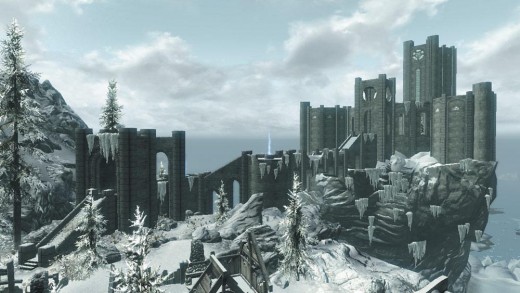
The College of Winterhold is Skyrim's only school for studying magic or in some cases history. It's where you go to learn the best spells and more. The quest line gives you access to the Master spells in the game after you get around 80-100 in that skill class. For example being a master in Destruction gives you Fire Storm, a spell that causes a massive explosion around the player. Or Grand Healing, which heals everyone in the vicinity. Now aside from Isaiah 8 19-20 and Exodus 22 18 telling us to avoid this stuff, there is some rather bad symbolism in the College. Such as the Eye of Magnus, but we will get to that later on. They do however save the world after a power-hungry man named Ancano tries to use the power of the Eye to change it. We will get to Ancano and his group, the Thalmor later on.
The awards you get are as follows: Archmage Robes that give you a giant boost in your magical abilities, the Staff of Magnus that takes away the magicka (energy used to cast magic in the game) from your opponent, and a few other trinkets that do similar things like Savos Aren's amulet. You also get access to parts of the Ice Form and Slow Time powers.
Now the Scripture strongly advises against witchcraft in Leviticus 19:31 and urges us not to indulge in such dark arts. While most of us can see that these things are not real, we should not entertain any form of it.
- "Regard not them that have familiar spirits, neither seek after wizards, to be defiled by them: I am the LORD your God."
Dawnguard
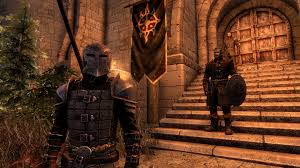
The Dawnguard DLC gives us access to two factions; the Dawnguard, a group of vampire hunters, or the Volkihar, an ancient clan of vampires. The Dawnguard are a group of skilled vampire hunters and priests dedicated to the destruction of the vampire race. Their main enemy is an ancient group of vampires ruled by Lord Harkon. He seeks to fulfill a prophecy that will give him control of the sun, putting the world into a dark age of vampires. What you get are spells you can use on the undead, vampire hunting gear, access to crossbow ammo you can make, and armored trolls. There's nothing extravagantly luring in their group.
Now that we have covered these groups, let's get into the evil factions in the game.
The Thieves Guild
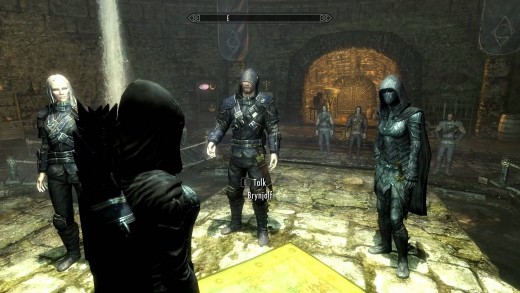
As the name states, they are an international band of thieves. In Oblivion they were actually kind of a good group. A Robin Hood kind of gang, robbing from the Empire and protecting the beggars. They even had a code of honor to not kill anyone (for the most part, exceptions are given later on). But their leader still believes in Nocturnal, the goddess of thieves who do not keep to this code of honor. Nocturnal claims to be an aspect of the void of Oblivion itself, and takes such titles as Mother of Night or Night Mistress. Her very nature is such that humans cannot understand her, as she is the embodiment of the unfathomable and enigmatic. Worshipers of Nocturnal consist primarily of those who operate in darkness and night, such as thieves and spies.
Now in Skyrim, this is completely changed. They are more of a mafia type, willing to kill in some circumstances and becoming a bunch of con artists, former assassins, and corrupt business owners like Maven Black-Briar. The quest line revolves around the sudden appearance of Karliah, who was rumored to have murdered the Guild's previous master Gallus. As a conspiracy plot is found among the Guild, the source of the Guild's bad luck is revealed to be that their master killed Gallus and betrayed Nocturnal, and you must work alongside Karliah to revive the group. You soon see the secret behind the source of all thieves luck; a group of warrior priests and thieves dedicated to Nocturnal, who are even a secret to the Guild themselves as shown when one of the high-rank members Brynjolf is surprised when Karliah reveals the truth. Here are the rewards you get:
- A book of symbols that identifies various symbols around Skyrim placed by fellow thieves. For example, a symbol that tells you what businesses are protected and are not to be robbed, am an escape route, loot, nearby members, etc.
- A suit of armor that increases your thievery skills, as well as a few sets of improved Thieves Guild armor such as Linwe's Armor, Thieves Guild Master Armor, as well as Blackguard Armor with the Dragonborn DLC.
- Nightingale Armor and Weapons, which you get after becoming a Nightingale, a priest-type thief dedicated to protecting Nocturnal's Twilight Sepulcher, her temple that links her realm to the mortal realm through a portal called the Ebonmere.
- Choose one of three interchangeable unique powers once the Nightingale story arc is complete. You can choose one of three powers; invisibility while sneaking, force your enemies to fight each other, or the ability to draw health from your opponents and give it to yourself.
- Access to Chillrend, which has the potential to be one of the most powerful weapons in the game at certain levels.
- Fences who will buy legally-obtained and stolen goods and will have larger amounts of gold available for trading than normal merchants (1,000 initially, 4,000 after completing all four improvement quests).
- Tonilla, the fence for the Guild, is one of the earliest vendors to regularly sell Daedric (the evil gods) Weapons.
- Access to four new merchants at the Ragged Flagon, including a blacksmith and an alchemist, after completing certain sidequests for the Guild.
- Free gold and lockpicks lying around the headquarters.
- Unlimited thievery radiant quests which reward gold.
- A dialogue option to avoid conflict with thieves encountered on the roads, and later on, they may even give you tribute.
- Guards can be bribed to remove bounties even if you have a low Speech skill and no bribe perk. This is different than paying your bounty off as when you did that you had any stolen items confiscated. Now you can just pay guards to look away so long as the crime was not murder.
- Temporary access to the Skeleton Key, an unbreakable lockpick.
- Learn part of the Disarm power.
So aside from some altercations with the law and your master betraying you, there are no real repercussions. And all of the codes of honor are taken away. You can steal from anyone or kill anyone you want outside of the Guild (the exception being your leader who betrays the Guild at the end) and not be punished by your members so long as the quest did not require you to not do so.
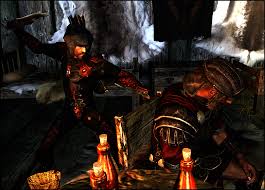
The Dark Brotherhood is an international group of assassins dedicated to the god Sithis, and his wife the Night Mother. So long as there is good pay, they are willing to send any soul to the Void (Sithis' domain and also the embodiment of himself) without a second thought and have been moderately successful from the time they began. The story line is as follows: after being recruited by stealing a Dark Brotherhood contract and proving your worth to their leader Astrid, you slowly earn the respect of your peers as your organization climbs back to the top when they receive their biggest contract yet; kill the Emperor. Here are the rewards you get for completing the quest line.
- Access to unique weapons like the Blade of Woe (absorbs health), Windshear (stagger effect), and Shrouded Armor and Robes that increase your corresponding skills.
- Access to a demonic horse named Shadowmere. In the games files, quests have stage numbers which are stages of a quest which go from 10-250. This is so quests will go in order. Example quest stage 10 go to insert place name here, and then the next stage would have you find something in that place. But in the quest stage for the quest "Cure For Madness" it is marked as 666 when it says "Behold Shadowmere" and reminds me of Revelation 6 5-6, which also makes sense since one of the rewards in Oblivion was the Scales of Pitiless Justice, which fortified some of your skills. And in this same game you get Shadowmere.
- After your old sanctuary is destroyed, you get a new one that comes complete with a torture chamber where you can make them give you the location to treasure, a lavish bedroom, a secret escape route, and more.
- The ability to summon Lucian Lachance, a powerful assassin from the previous game.
- An infinite amount of contracts given to you from the Night Mother as well as a finite amount from your friend Nazir that can go from giving you a few hundred dollars to a thousand, which is actually a lot in the games world considering the most expensive house you can buy is only 25000. These contracts can sometimes seem antihero at best, usually having you go after bandits, thieves, the works. The same can also be said for the previous game. But it is not only limited to those kinds of deals. In Oblivion you killed an old man so his son could get his inheritance, another old man in debt, etc. In Skyrim you kill a lonely schizophrenic beggar who lost his sister, a woman on her wedding day, a chef, a paranoid man living in the fields, and even a maid in a fortress. One of the worst ordeals is in Oblivion. In both games you can ask for advice on a contract. On one of your first contracts a member gives you this advice. "So, your first contract. No chance for a bonus, huh? That's all right, you're better off! Who needs magic items when you've got raw skill? And the great thing about killing a target up close and personal is you can talk to 'em before you do it! You know, say something scary! For example, this one time I had a contract to kill a little Nord girl at her birthday party. She asked me if I was the jester! So I said to her."No, I am a messenger of death." You should have seen the look on her face! Ha ha ha ha! Anyway, she won't be seeing age six!"
So not only is this a pretty evil group, there is also no real repercussion for your actions. Yeah there is the consequences of arrest or paying your bounty off like I said before, but those are little compared. You end up murdering over 20 innocent people and it makes it seem okay. The only real consequence I can see is when later on you lose a bunch of your friends in a fire, but even then you get vengeance on their killer later on. There's no real sense of remorse. Now you yourself could make the choice to leave them (just stop playing their quest line and pretend in your mind like you left) or destroy them at the beginning of the quest line, but with all of this stuff you can get its hard to resist. And even if you do that, it is only left up to your imagination and not an in game choice.
The Volkihar Clan
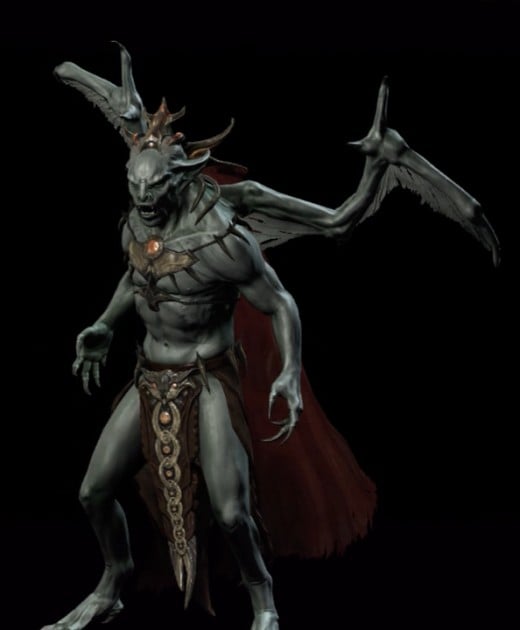
And finally we have the Volkihar Clan, an ancient group of vampires ruled by Lord Harkon. He seeks to fulfill a prophecy that will give him control of the sun, putting the world into a dark age of vampires. Before we get into the rewards, we need to go into the history of the clan.
Harkon was once a powerful ruler who was scared of one thing, which is death. To avoid this he pledged his soul to Molag Bal by sacrificing a thousand innocents in his name. Molag Bal is the Daedric Prince of Domination, Enslavement, Rape, and Vampires. In return for his service, Molag Bal granted him immortality by turning him and his family into Vampire Lords, the most powerful kind of vampire. We will cover Molag Bal and all of the other gods and their symbolism later on.
The storyline is that his wife fears that this new age of darkness will result in mortals hunting vampires into extinction. So she hides herself away, alongside her daughter Serana and an elder scrolls because not only is the scroll needed to figure out the rest of the prophecy, but the prophecy also needs the blood of a female Vampire Lord. After the Dawnguard sends you on a quest to investigate a cave you discover both the scroll and Serana, who is wanting to go home. After you return her home you are now given the choice to choose which side; Volkihar, or Dawnguard. The Volkihar quest line gives you the following, with the only repercussion being that the sun makes you a bit weaker in the day light.
- Free access to Volkihar Keep, a huge castle on an island which holds several wardrobes and bookcases that are safe containers for storage, access to special spells, a portal to a realm of trapped souls called the Soul Cairn (accessible by both Volkihars and Dawnguard as both sides need to get the Volkihar side you become the new lord of the castle.
- The Bloodstone Chalice and Amulets of Night Power, which can augment your vampiric powers.
- Two dog followers known as Cusith and Garmr
- Access to Fura Bloodmouth, a master trainer for Two-Haned,
- Ronthil, an expert trainer for Speech.
- Radiant quests that give you different rewards such as gold or potions of blood that suffice for drinking blood from people.
- The ability to transform into a Vampire Lord upon immediate membership (can be obtained later if you side with the Dawnguard but results in being expelled from the Dawnguard until cured). This is the real fun part as you get the following abilities. The Vampire Lord power has the following effects:
- Night Vision
- Your health, magicka, and stamina increase by 100 points each
- Magicka regenerates 2% faster
- Poison Claws
- When outside during the day, your health, magicka, and stamina decrease by 60 points each and regeneration is reduced by 90%
- Vampiric Drain (draisn the health of your enemies and gives it to you) and can be upgraded with the Bloodstone Chalice
- Transform into a swarm of bats for two seconds in order to evade damage (costs 25 magicka)
- The Raise Dead spell
- Detect all creatures
- Transform into an invulnerable mist, while health, magicka, and stamina regenerate
- Slow down time
- Surround yourself with bats that feed on enemies within range
- Pull a creature to you from a distance, and do choking damage once it's close.
- Summon a Gargoyle
- Paralyze Spell
So you get all of this and the worst consequence is that you are weakened some in the sun, some people will not like you, vampire hunters come after you, and you are weaker against fire. And at the end of the quest line you can use a bow to blot out the sun for a limited time and you could always use enchantments or racial abilities for Dark Elf characters to counter the fire damage, so there is no real consequence.
So as we can see here the quote on quote "good" groups are severely lacking, while the evil ones have all the good stuff. That doesn't exactly set a good message. And that isn't the only extent of the bad messages in the game. Let's talk about the Daedric artifacts. But first, let me explain what Daedra are. They are the group of gods who did not participate in the creation of the world and while not all of them are downright malevolent, not all of them are exactly good. Their artifacts are the most powerful items in the game, which you can view here. But please look at it with caution.
Symbolism
Before we go on, please look into the symbolism behind the symbols below. They have been used in countless religions throughout the world, including some modern ones.
Pagan Symbols and Their Meanings
First starting with the Aedra, or "good" gods, then going towards the non Aedric ones. We're going to see that even the good gods in the game are evil according to scripture. Then we will completely deconstruct the Daedra.
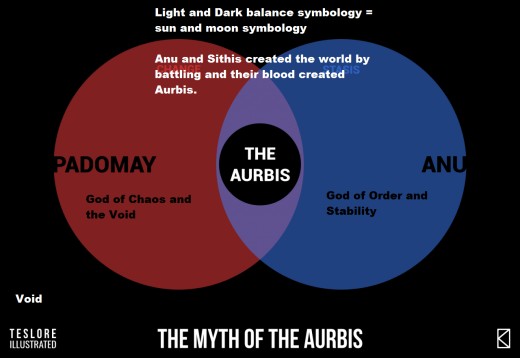
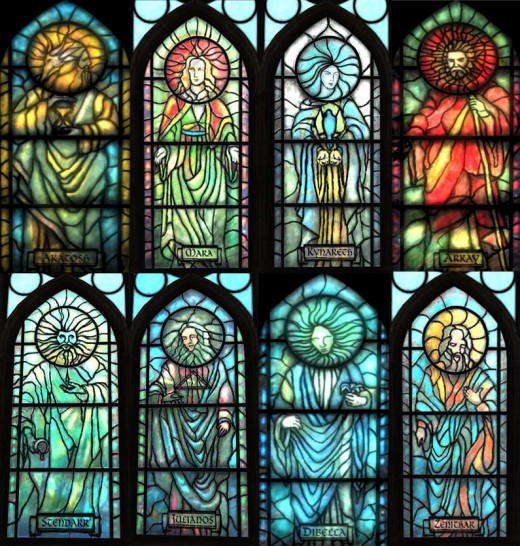
Alkosh, Dragon King of Cats
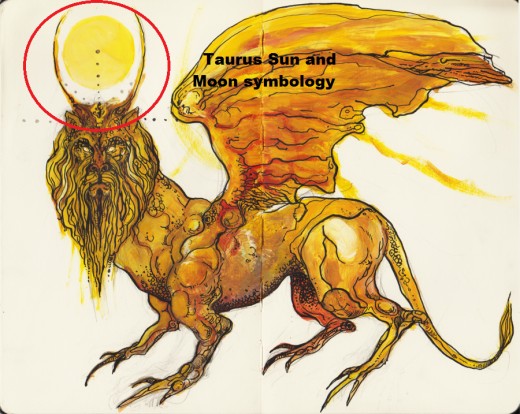
Mara, the the other-goddess and goddess of love
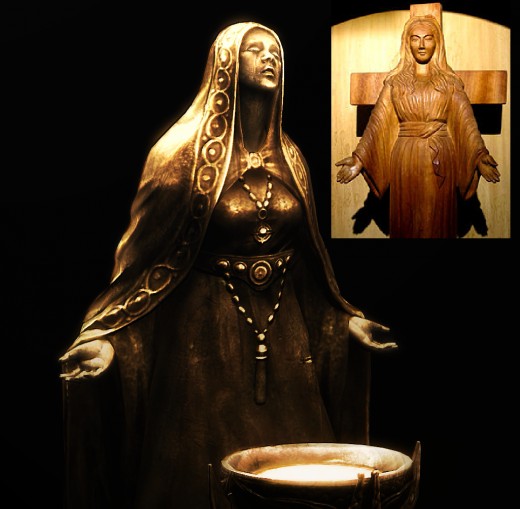
- "'Mara' in Hebrew means "bitter," or "very sad." However, it seems more likely she was intended to represent Mary, Mother of Jesus. Further evidence lies in Mara's statuary, which depicts a young woman, wimpled and weeping. This echoes the famous weeping statue of Mary." - Elder Scrolls wiki page.
This is in reference to the pagan influence on the beliefs surrounding Mary that are prevalent in most denominations, specifically Catholicism.
College of Winterhold
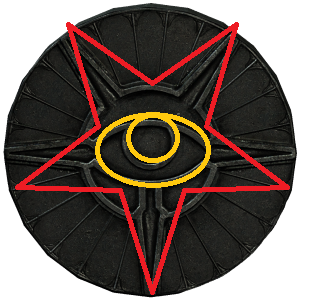
Eye of Magnus, the God of Magic (All Seeing Eye, more info later).
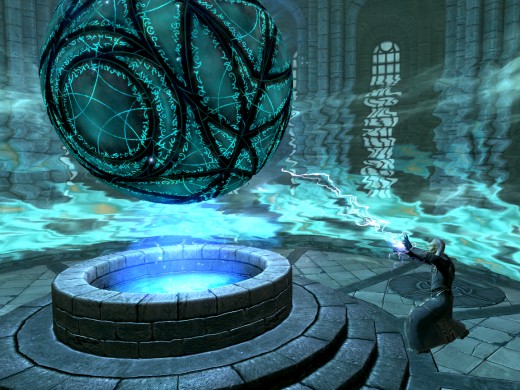
Vivec
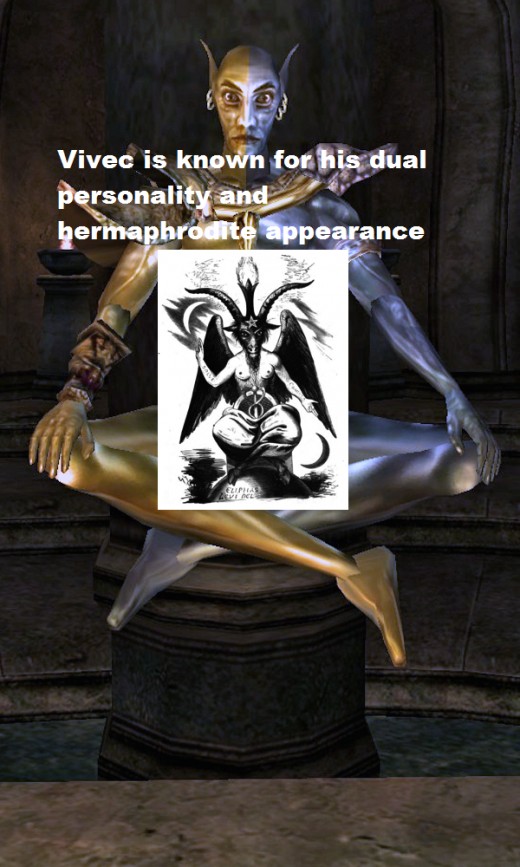
Vivec is also associated with Molag Bal
Daedra
Now the Daedra, or evil gods (although not all of them are portrayed as entirely malevolent).
We will be going out of alphabetical order here because I want to separate it into different parts so you can notice the similarities between them as well as focus on the pagan influences. Also, these are just a few of the Daedric Princes. There are 17 in total, but so far this is all I could regarding their pagan backgrounds.
The first few have pagan names associated with false deities in the scriptures.
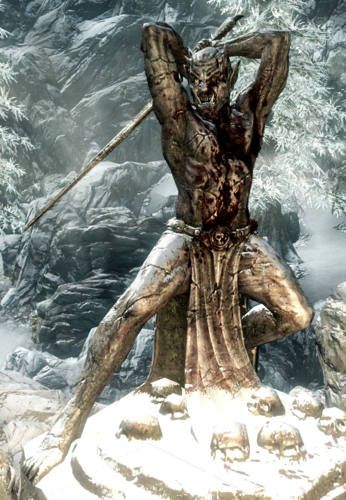
Notice his devilish appearance. Also, Malacath's name can be split into "mal'akh" and "ath". The word "mal'akh" is Hebrew for "angel," while "ath" could be derived from the Greek "atheos," which means "without God" or "abandoned by God", probably alluding to the idea that Satan was Lucifer and was cast down from Heaven. In the game world Malacath used to be Trinimac, an Aedric knight of Auri-El (an alternate spelling of the name Uriel, which means "light of God" or "flame of God"), but after a fight with Boethiah he and his followers were turned into Orcs.
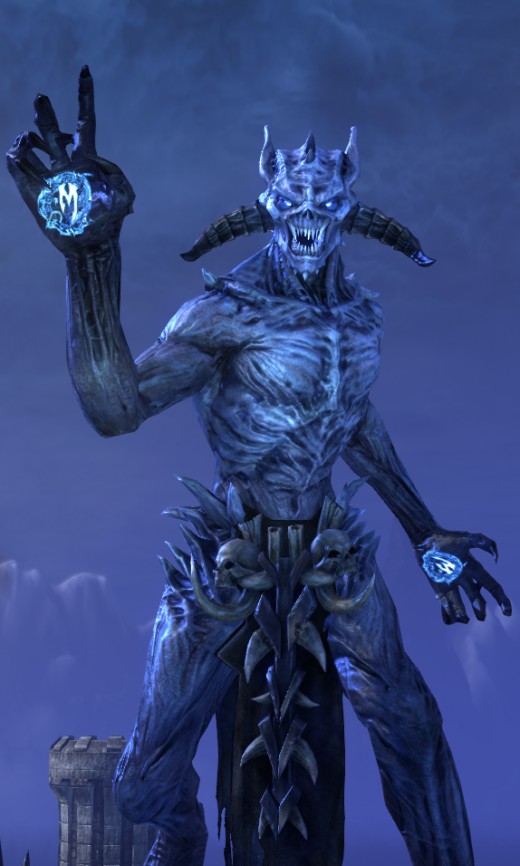
He, like the false god Baal, requires sacrifices (Jeremiah 19 5) and looks like a bull, like the golden calf (Exodus 32), some depictions of Baal and Moloch
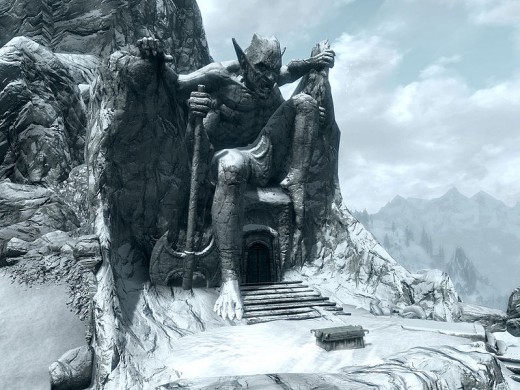
Dagon is the Philistine god with temples at Beth-dagon and was an enemy to the Israelites. Notice his similar appearance to the traditional Devil.
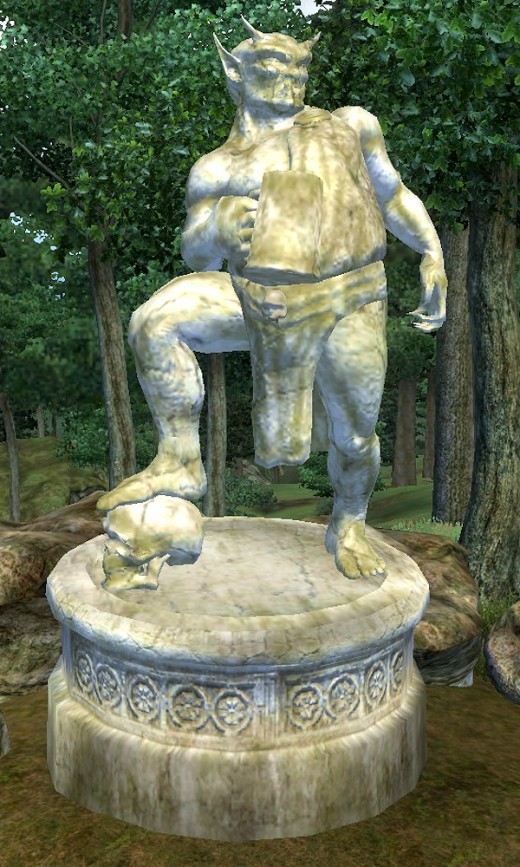
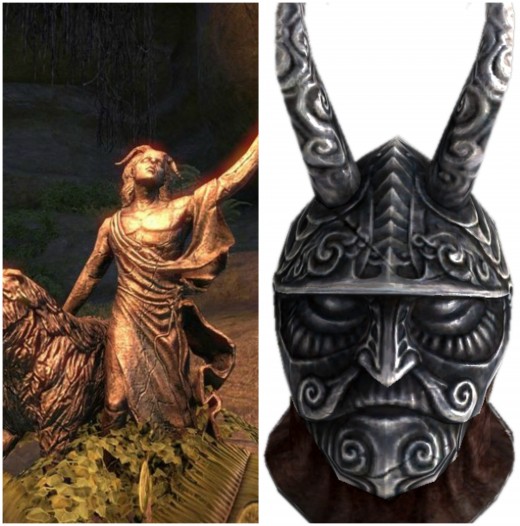
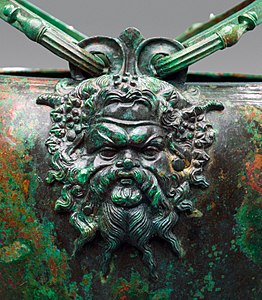
Clavicus Vile is unique when you compare him to the other evil Daedra. He is much more devilish. You can argue that this is contrary due to the fact of the other Daedra seeming much more malevolent and monstrous, but he is more subtle and coniving. He is a tempter. He comes to you in the form of your desires. He seeks to tempt you using what you want most, and also draws you towards evil things. That is what Clavicus Vile does best. He is a wish granter, but there's always a catch. For example, if you ask for a cure for a disease, he will kill you. He did make sure you don't suffer from that disease anymore. Ask for a powerful weapon and he'll give it to you, but perhaps it will break at the worst time or end up killing you.
He has both a beautiful and devilish appearance. Without his mask, he looks like a beautiful man. But his Masque looks just like a stereotypical Devil face, complete with horns and a small beard. And there is one more thing I want you to notice. In the game, there is a language and alphabet for the Daedra. What do we get when we put Clavicus's name in Daedric? "child-god of the Morningstar," which is in reference to how his date of summoning is on the 1st of Morning Star, one of the in-game months (Source: Imperial Census of Daedra Lords.) This is also in reference to the misconception of the Devil's appearance in Isaiah 14, in which people attribute him to being a fallen angel who sought to bring humanity knowledge. More on that here at What You Should Know About the Devil.
We also see a lot of pagan sun and moon symbolism.
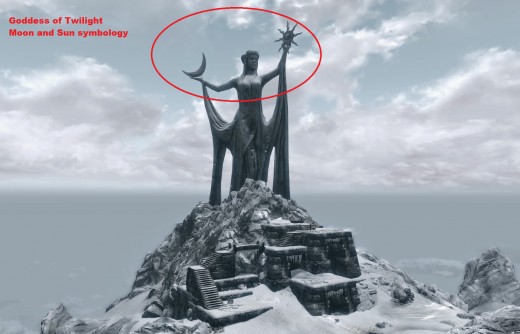
The same goes for Meridia.
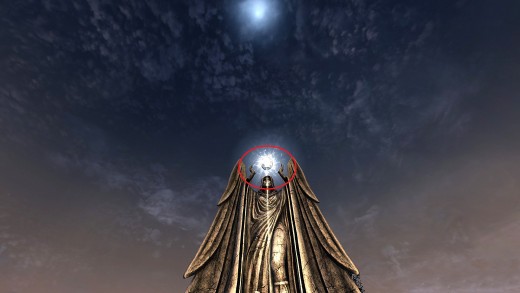
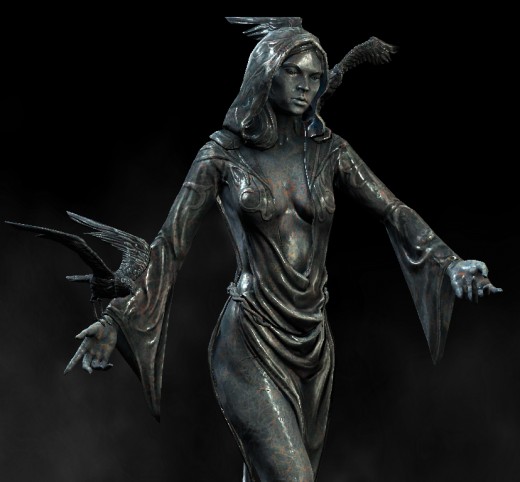
And Nocturnal, whose sphere is darkness
The symbol of the religion associated with her can be seen below, which is the Nightingale Symbol, but it looks just like a crescent and sun.
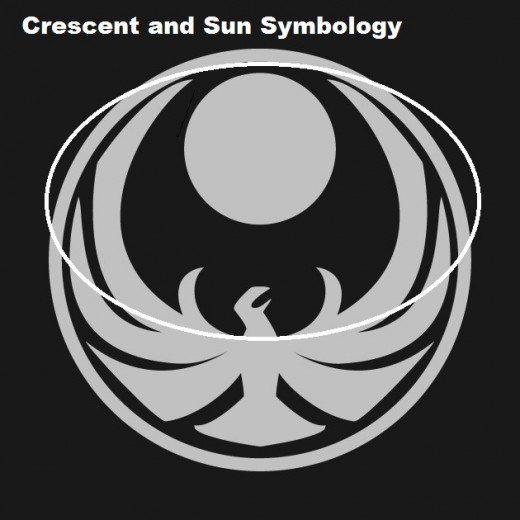
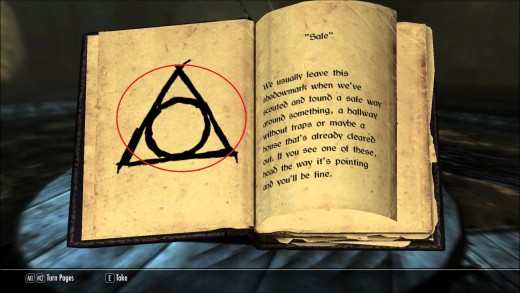
This picture below is from the in-game book Shadowmarks, which is a guide for thieves. Specific marks are put around the world of Skyrim and their meanings can be found in the book. For example, this mark means "Safe" or follow this way. It is similar to the Freemason symbols seen earlier.
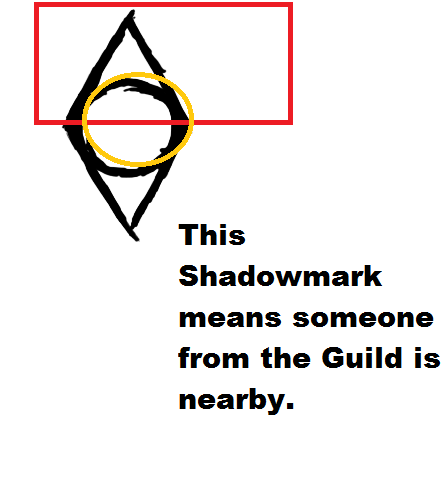
You could argue that Meridia and Nocturnal, being polar opposites, are also symbolizing the sun and moon, good and evil balance symbolism. Nocturnal is not primarily limited to thieves. Her whole sphere of influence is night, darkness, luck and obscurity. Even one of the authors in one of the fictional in-game books comment on this.
I strove to understand her labyrinthine philosophy, the source of her mysterious pain. Everything about her was dark and shrouded, even the way she spoke and the acts she required of me. It took years for me to understand the simple fact that I could never understand Nocturnal. Her mystery was as essential to her as savagery was to Boethiah or treachery was to Molag Bal. To understand Nocturnal is to negate her, to pull back the curtains cloaking her realm of darkness.
— Invocation of Azura, Sigillah ParateAs much as I loved her, I recognized the futility of unraveling her enigmas.
Meridia, while not being totally good, is generally a benevolent being and is always associated with infinite energy and light, and is in no way associated with darkness or mystery. Even her realm, the Colored Rooms resemble a cross between a coral reef and a vast field of floating stones, strewn with colorful trails of dust or cloud. The "ground" between the stones looks like luminescent water, but is solid enough to walk on. So it is very much associated with brightness. Notcurnal's realm of the Evergloam, however is one of total darkness.
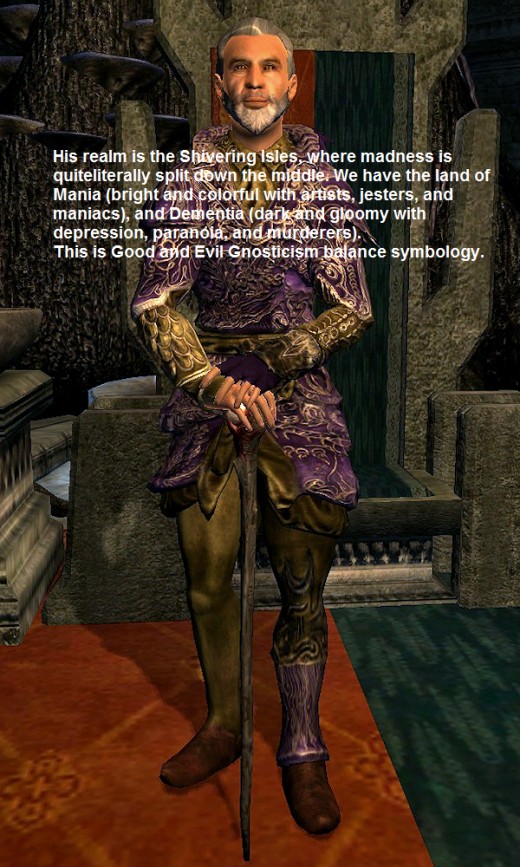
He is very similar to Sotha Sil in that his actions can be quite random. One moment he is merry and kind, the next he is malevolent.
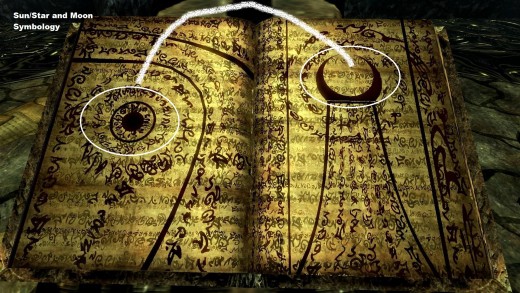
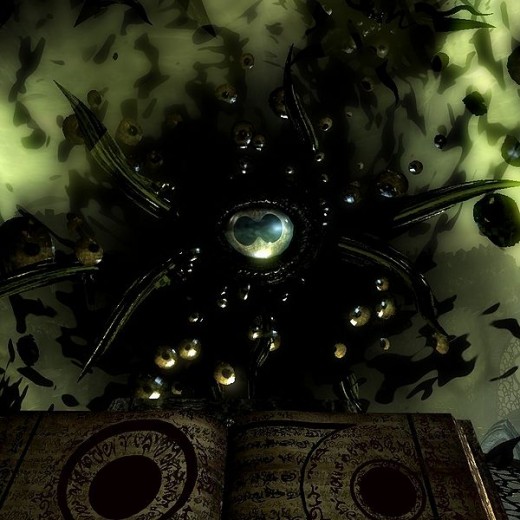
After analyzing the Eye of Magnus and the Black Book: Filament and Filigree, I noticed something very interesting. The writing on the Eye of Magnus is the same as the one on the Black Book. I asked a friend of mine to help me out in understanding what this could mean after I had him research it for himself. He had this to say.
One cryptic thing I noticed is that the Eye of Magnus talked about being found in an ancient Nordic city... maybe this relates to pagan Nordic religion somehow." The Nords in Skyrim are indeed based off of the real Vikings, as well as the Nordic religions in game.
One cryptic thing I noticed is that the Eye of Magnus talked about being found in an ancient Nordic city... maybe this relates to pagan Nordic religion somehow." The Nords in Skyrim are indeed based off of the real Vikings, as well as the Nordic religions in game.
Just reading this I found interesting: "Hermaeus Mora maintains a realm in Oblivion called Apocrypha, where all forbidden knowledge can be found." Apocrypha... this can be a parable how Knowledge is hidden... just like the Vatican etc. hid certain Books which is why it's called the "Apocrypha" (and who knows what else they're hiding).
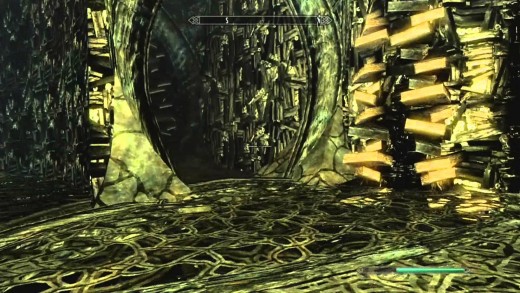
Hmm.. it (The Oghma Infinium, one of Hermaeus Mora'a artifacts that give you mass amounts of knowledge) was also written by "Xarxes" automatically made me think of Xerxes who was a King of Persia.
Just reading this I found interesting: "Hermaeus Mora maintains a realm in Oblivion called Apocrypha, where all forbidden knowledge can be found." Apocrypha... this can be a parable how Knowledge is hidden... just like the Vatican etc. hid certain Books which is why it's called the "Apocrypha" (and who knows what else they're hiding).
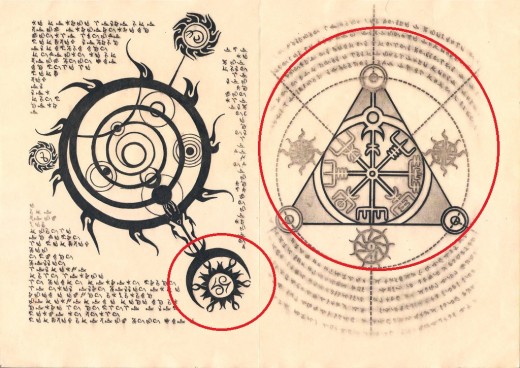
Hmm.. it (The Oghma Infinium, one of Hermaeus Mora's artifacts that give you mass amounts of knowledge) was also written by "Xarxes" automatically made me think of Xerxes who was a King of Persia.
Now this I found suspicious too: "Sometime before the First Era, the dragon Priest Miraak gave his allegiance to Hermaeus Mora in exchange for being granted the knowledge that would give him great power. With his new found power, Miraak turned against his dragon masters, but was confronted by Vahlok the Jailor, another dragon priest.
Dragon priests... that alludes to how/what they were doing back then... sun worship; sacrificing to idols of the demons; sacrificing to them -- doing things exactly opposite of Our Father in order to obtain their "knowledge" and in exchange for their kingdoms... hence the pyramids being built, Tower of Babel, etc.
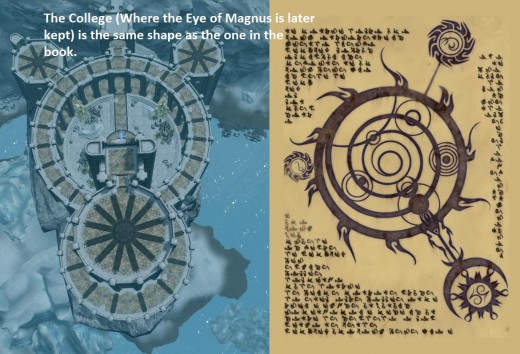
And then this part too: "the third word was granted in exchange for the Skaal's wisdom and the life of their shaman, Storn Crag-Strider. After learning the second and third Words of Power, the Dragonborn (main character) traveled back to Apocrypha and battled with Miraak at the realm's summit. Near defeat, Miraak attempted to escape death by submerging himself into the waters of Apocrypha, but was promptly impaled by Mora's tentacles.
Miraak then died of his wounds, and his soul was absorbed by the Dragonborn. Mora then gave Miraak's status to the Dragonborn.
Hermaeus Mora is based on H.P Lovecraft's stories, which entail the idea of forbidden knowledge, huge gargantuan monsters composed of eyes and tentacles, etc. I also made some comments as to how Apocrypha is basically a large black sea with libraries and how scripture says the beast would come out of the sea.
Yes indeed Beast of the Sea... Rev 13. HP Lovecraft wrote very occultic books. His last name might as well be "witchcraft" for real though!" I myself read a few of his stories and seen films based off of them such the Call of Cthulhu and Re-Animator so I can confirm this statement after turning away from such blasphemous nonsense.
It's definitely a battle between good and evil -- symbolizing Knowledge and the wanting of "secret hidden forbidden knowledge" and the ways in which they went about attaining it... through exchanging with demonic principalities just like today. Wow no difference whatsoever... that's all I saw -- pray that it helps somehow.
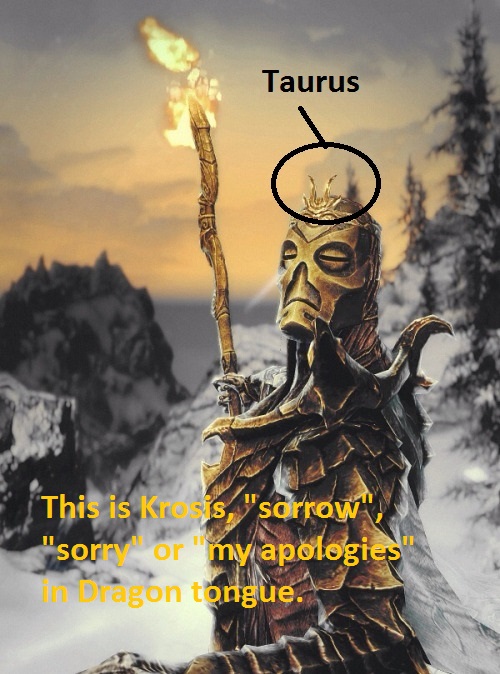
Now, this I found suspicious too: "Sometime before the First Era, the dragon Priest Miraak gave his allegiance to Hermaeus Mora in exchange for being granted the knowledge that would give him great power. With his new found power, Miraak turned against his dragon masters but was confronted by Vahlok the Jailor, another dragon priest.
Dragon priests... that alludes to how/what they were doing back then... sun worship; sacrificing to idols of the demons; sacrificing to them -- doing things exactly opposite of Our Father in order to obtain their "knowledge" and in exchange for their kingdoms... hence the pyramids being built, Tower of Babel, etc.
The Dragon Priests in the game are indeed similar to the sun worshipers. In the game series, there was a period when dragons ruled the world and there were various cults devoted to worshiping them through sacrifice, rituals, etc. In return for their service, many of these dragon priests were granted extraordinary powers and knowledge the arcane and were even given immortality.
And then this part too: "the third word was granted in exchange for the Skaal's wisdom and the life of their shaman, Storn Crag-Strider. After learning the second and third Words of Power, the Dragonborn (main character) traveled back to Apocrypha and battled with Miraak at the realm's summit. Near defeat, Miraak attempted to escape death by submerging himself into the waters of Apocrypha, but was promptly impaled by Mora's tentacles. Miraak then died of his wounds,.....
....and his soul was absorbed by the Dragonborn. Mora then gave Miraak's status to the Dragonborn.
Yes indeed Beast of the Sea... Rev 13. HP Lovecraft wrote very occultic books. His last name might as well be "witchcraft" for real though. I myself read a few of his stories and seen films based off of them such the Call of Cthulhu and Re-Animator so I can confirm this statement after turning away from such blasphemous nonsense..
It's definitely a battle between good and evil -- symbolizing Knowledge and the wanting of "secret hidden forbidden knowledge" and the ways in which they went about attaining it... through exchanging with demonic principalities just like today. Wow no difference whatsoever... that's all I saw -- pray that it helps somehow.
The Dragonborn False Messiah
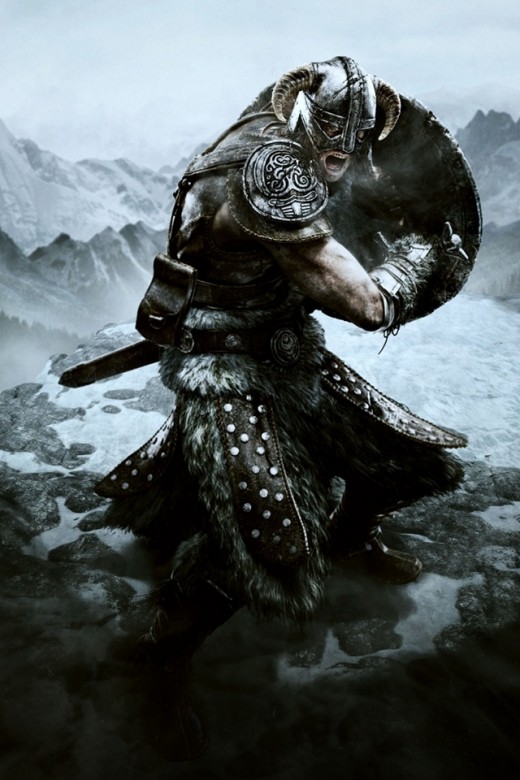
The game series itself is based around the Elder Scrolls, which foretell great events of the future. One of these is a civil war in Skyrim and how the dragon Alduin shall come to seek worship and destroy the world (clearly alluding to Satan). So the next Dragonborn is born, which is you. While anyone can kill a dragon, only you can destroy its soul by absorbing it with which you then use it to unlock more powers called Shouts (kind of like spells in the game but are used in Dragon tongue and spoken rather than cast). But given the pagan origins, we can see in both the good and bad gods in the game, this character is by default a false perversion of Christ.
The Ten Commands
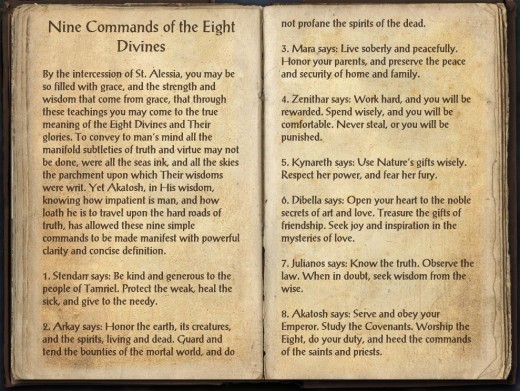
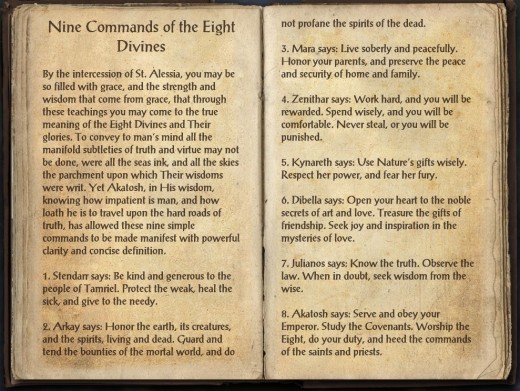
Do we need more proof? In the previous game Oblivion, there is a book called the Ten Commands. This is directly parodying the Ten Commandments of the Most High and replacing them with commands from the Aedric gods.
Conclusion
I will be doing an article on why we should seek righteous entertainment someday. I have heard the arguments. "It's just a game." Are we not to live according to the Bible? Isn't what we do suppose to be in accordance with what God says is right? How does playing a game with false gods in it respect him? Unless you can completely rewrite the game with mods and take out every false spirit in it then there is no way you can show respect to him. I tried it before. I was a part of The Skyrim Blog (now known as The Tamriel Vault) and I tried someone's build that was based on Christ himself. But it did not come close to what he is like. And trying to put him in a world full of false gods and magic is not a righteous thing to do even if you are attempting to play as a righteous character.
I pray that this has helped you. Peace and blessings and all praises to the Most High.
